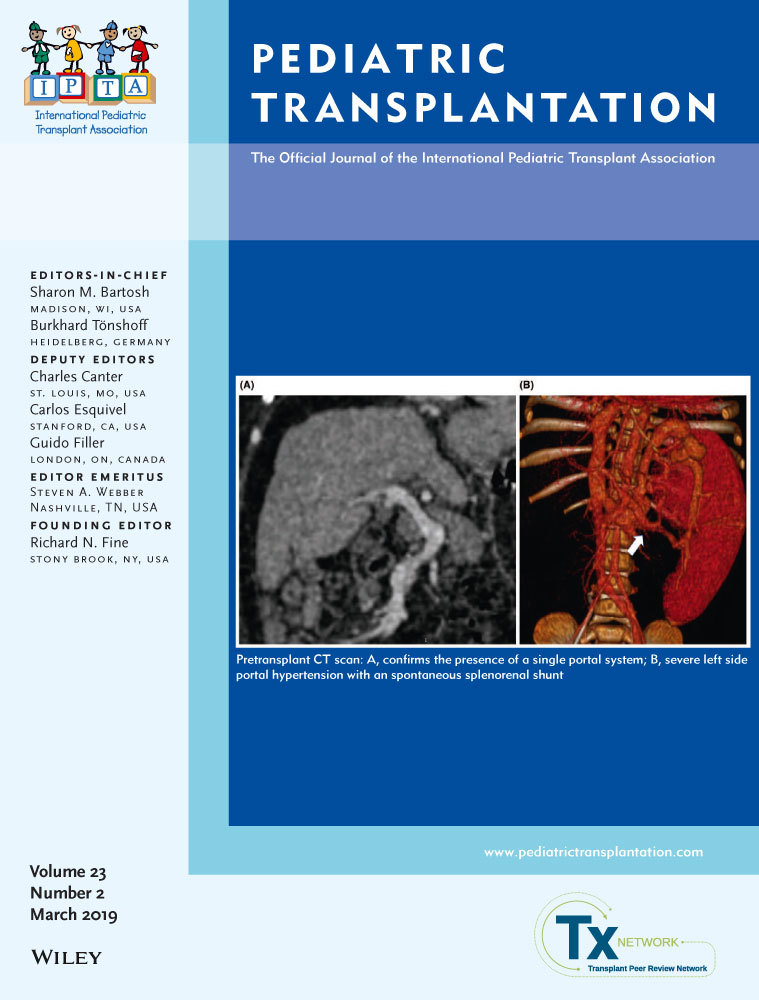Moderate-severe primary graft dysfunction after pediatric heart transplantation
Abstract
Background
PGD is a complication after heart transplantation (OHT) and a significant cause of mortality, particularly in infant recipients. Lack of standardized definition of PGD in the pediatric population makes the prevalence and magnitude of impact unclear.
Methods
ISHLT PGD consensus guidelines, which include inotrope scores and need for MCS, were applied retrospectively to 208 pediatric OHT recipients from a single institution from 1/2005-5/2016. PGD was defined as: moderate PGD—inotrope score >10 on postoperative day 1 (24-48 hours), and severe PGD—MCS within 24 hours (in the absence of detectable rejection).
Results
PGD occurred in 34 patients (16.3%); 14 of which had severe PGD (6.7%). Multivariate risk factors for PGD included CPB time (OR 10.3/10 min, 95% 10.05, 10.2, P = 0.03), Fontan palliation (OR 1.9, 95% 1.2, 3.97), and PCM (OR 5.65, 95% 1.52, 22.4); but not age, weight, ischemic time, or donor characteristics. Upon sub-analysis excluding patients with PCM, increased CPB was a significant multivariate risk factor (OR 10.09, 95% 9.89, 10.12, P = 0.003). Patients with PGD had decreased discharge survival compared to those without PGD (85% vs 96%, P < 0.01). Severe PGD was associated with the poorest 1-year survival (57% vs 91% without PGD, P = 0.04).
Conclusion
Patients with prolonged CPB are potentially at risk for developing PGD. Neither infant recipients nor donor characteristics were associated with an increased risk of PGD in the current era.
CONFLICT OF INTEREST
None.




